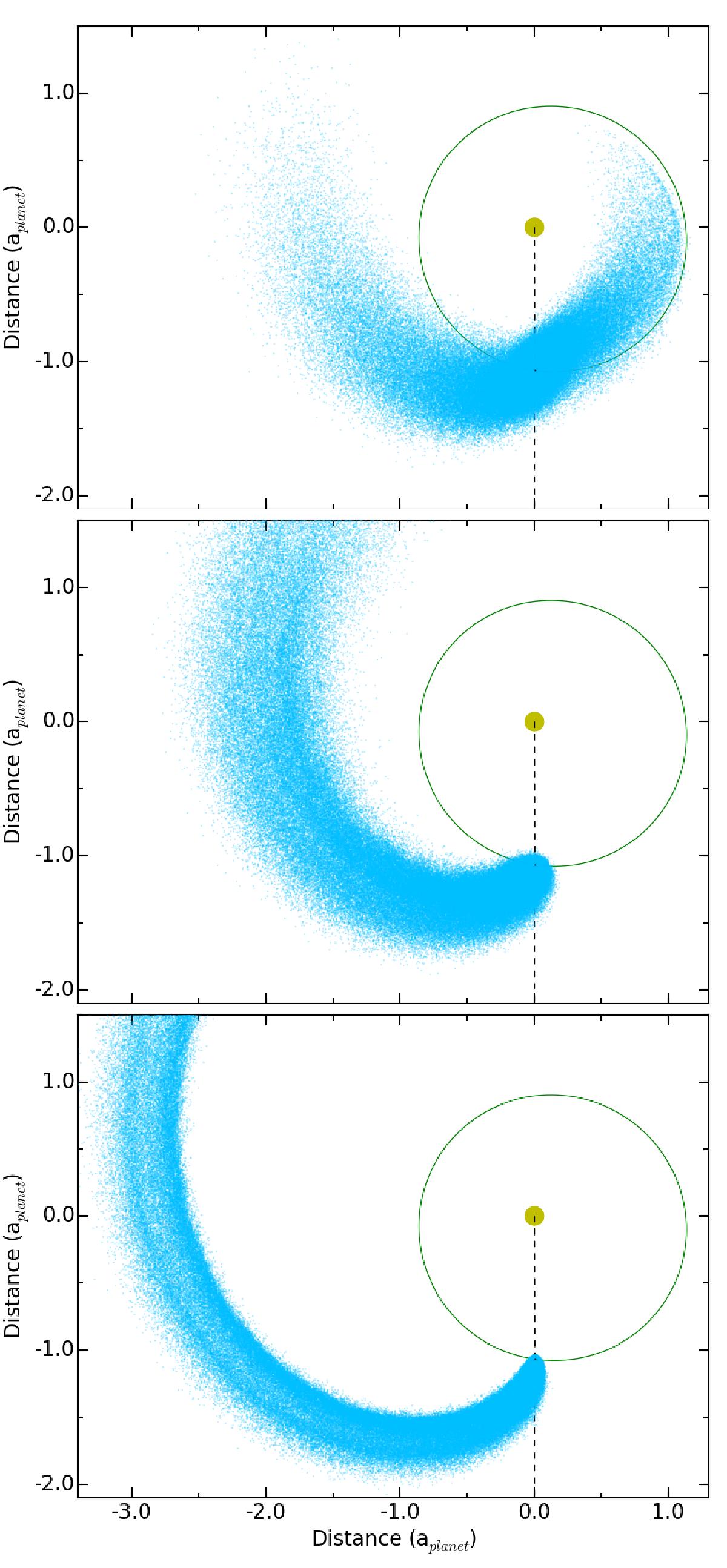Fig. 2

Views of GJ 436 b exosphere (blue dots) from the perpendicular to the orbital plane. The planet is the small disk at the intersection of the star/Earth LOS (dashed black line) and the planetary orbit (green line). All system properties are similar in the three panels, except for radiation pressure. Upper panel: without radiation pressure, stellar gravity shears the extended cloud of hydrogen, and gas at shorter orbital distance than the planet falls toward the star. Middle panel: with even a moderate radiation pressure (~60% of stellar gravity at maximum), all the escaping gas decelerates and moves to larger orbits, forming a longer comet-like tail trailing behind the planet. This is the real radiation pressure that corresponds to the observed Lyman-α flux. Lower panel: with a high radiation pressure (~400% of stellar gravity at maximum), the escaping gas is swiftly blown away. The planet is surrounded by a much smaller coma but trailed by a narrower, more radial, cometary-tail.
Current usage metrics show cumulative count of Article Views (full-text article views including HTML views, PDF and ePub downloads, according to the available data) and Abstracts Views on Vision4Press platform.
Data correspond to usage on the plateform after 2015. The current usage metrics is available 48-96 hours after online publication and is updated daily on week days.
Initial download of the metrics may take a while.


